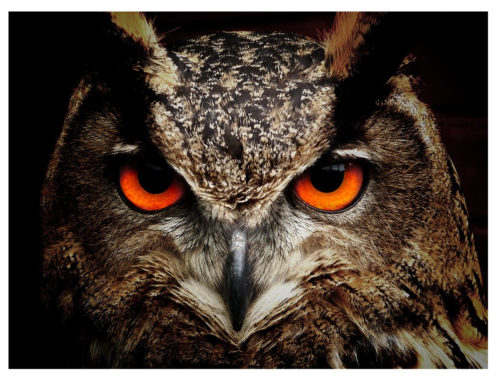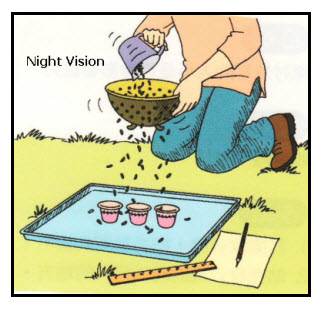Question: Why can nocturnal animals, such as owls and cats, have better night vision than daytime hunters?
Answer:
Animals that hunt at night have more rods in their eyes than do other animals, including you.
So what are rods?
The retina is the back innermost part of the eye of animals. In the retina are light-sensitive cells called rods and cones. Rods are more sensitive to light and work better in dim light than do cones. Both rods and cones contain pigment that makes them sensitive to light. When light strikes these cells, a visual message is sent along the optic nerve to the brain. Rods send” black and white ” messages and cones send color messages. If the light is not bright enough, cones do not work at all. So at night rods are generally the only light-sensitive cells working.
Owls, cats and many other night animals (those that hunt for food at night) have more rods in their eyes than you do.
Discover for Yourself
Purpose To demonstrate that animal with more rods in their eyes, the more light they collect.
In this experiment, the rice represented light and the cups rods.
1. Set a tray outdoors on the ground.
2. Place three paper cups in a row and about 1 inch (1.25 cm) apart across the center of the tray.
3. Hold a colander about 12 inches (30 cm) above the cups.
4. As you pour 1 cup (250 ml) of rice into the colander, gently shake the colander.
5. Pour the rice collected in the three cups into a measuring cup and note the total amount collected.
6. Repeat steps 2 through 5 placing 12 cups in the tray. Compare the total amount of rice collected by 3 cups versus the amount collected by 12 cups.
Results: More rice is collected in 12 cups than in 3 cups.
Summary The cups in the investigation represented light sensitive cells in the eyes of animals and humans. The rice represented light. Light enters the eye through the pupil, which is a structure in the front of the eye that controls the amount of light entering the eye. In low light or no light, the pupil relaxes and enlarges, thus allowing more light to enter the eye. During the day, the pupil contracts, thus restricting the amount of light entering the eye. Rods are activated by much less light than are the light-sensitive cells called cones. Rods are the primary light-sensitive cells in animal and human eyes that function at night. The more rods, the better is an organisms night vision, which is also known as scotopic vision.
Nocturnal (night hunters) animals have more rods in their eyes then do the eyes of animals that hunt during the day. With more rods in their eyes, nocturnal animals have better night vision because more visual messages are sent to the brain.
FYI: While not represented by this investigation, another feature of the eyes of nocturnal animals is the size of their pupil. The pupils of most nocturnal animals can open wider than the pupils of animals that are daylight hunters as well as people.
Human Body for Every Kid
The activities in this book, you’ll find out how your lungs supply air to your blood and your heart pumps blood throughout your body; how your body sees, hears, feels, smells, and tastes the world around it; how you lose and regain up to five pounds of skin every year; and much more. Most of the materials you need are already part of you; the rest you will easily find around the house or classroom.
(Paid Link)


